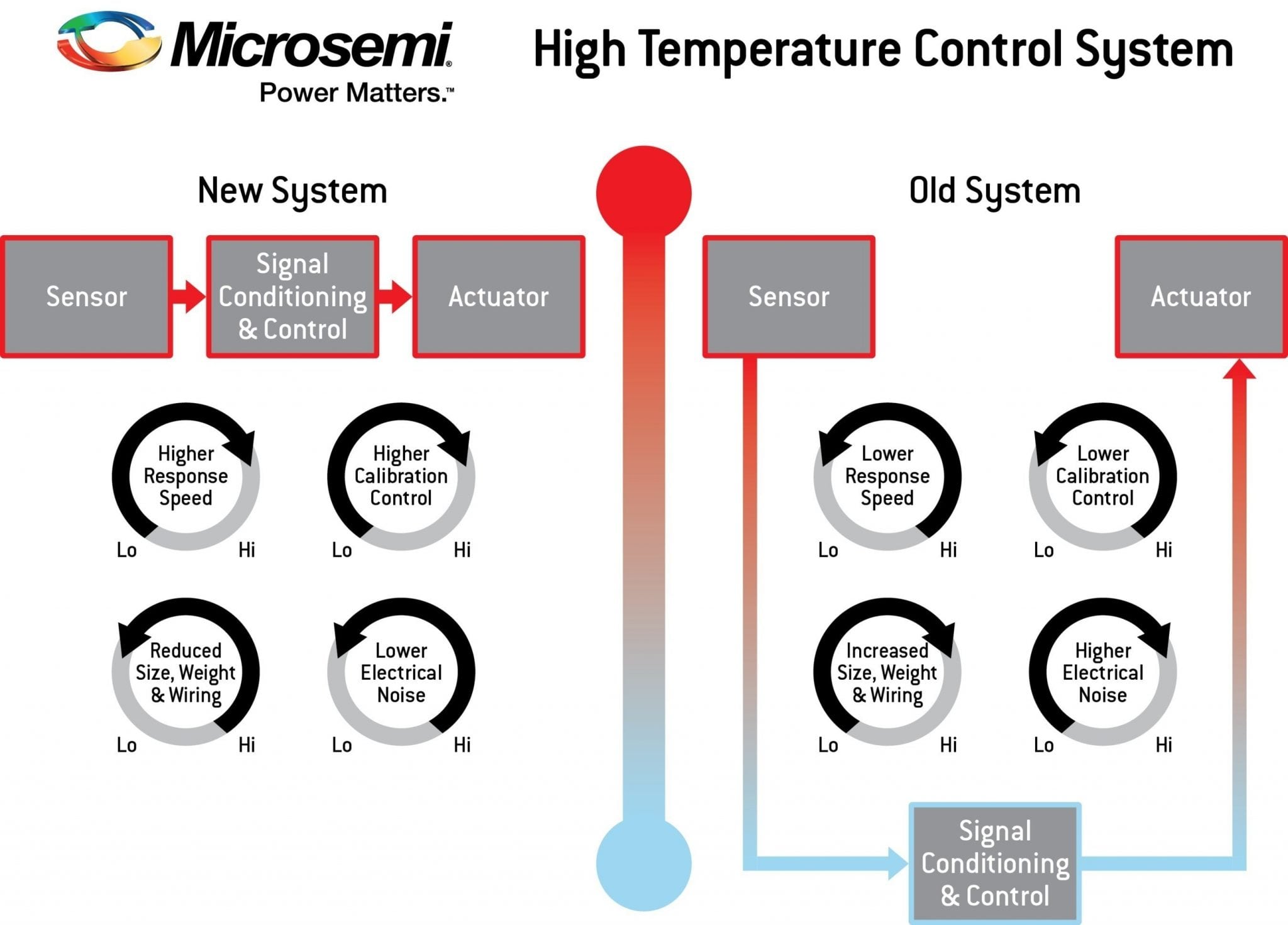 |
| A diagram of Microsemi’s high temperature control system plan for avionics actuators. Photo: Microsemi |
[Avionics Magazine 09-20-2016] Flight-critical avionics provider Microsemi is collaborating to address issues with high-temperature electronics design for avionic actuator systems with Moog Controls and U.K.-based academic partners, the University of Bristol and Southampton University. The collaboration, named NEMICA, aims to develop industry-leading reprogrammable memories and gate arrays based on Nanoelectromechanical (NEM) technology that are capable of withstanding long-term exposure to high temperatures and harsh environmental conditions. Specifically, it is looking to develop reprogrammable memories and gate arrays based on nano-relay technology that are capable of withstanding long-term exposure to 225 degrees Celsius and/or 100 Millirads (Mrads).
System designers face considerable challenges when designing control systems operating in high temperature environments. To achieve ideal performance levels in terms of system efficiency and safety, engineers must relocate the controller closer to the points of monitoring and output. In most systems this is easily achieved because the environment is ambient and harmonized. However, in applications where the sensor and the actuator are in a high temperature location (200 degrees Celsius and above), it is not always possible to place conventional electronic control systems near the sensor and actuator.
To overcome this problem, system engineers must place the controller in a cooler region. This normally entails designing new high-temperature connections systems, interfaces, signal conditioning and protection to maintain the integrity of the data being collected and of the electronic instruction back to the actuator. The alternative is to provide cooling systems which otherwise do not add any value to the system. All of this adds cost, weight and delays in the system response. This is what NEMICA aims to address.
The collaboration is a three-year, $1.3 million project (1 million pounds) partially funded by the U.K. government through its technology agency’s Innovate U.K. program. While it is aiming to address the avionics market, the technology also has markets in space, transportation, and down-hole drilling.